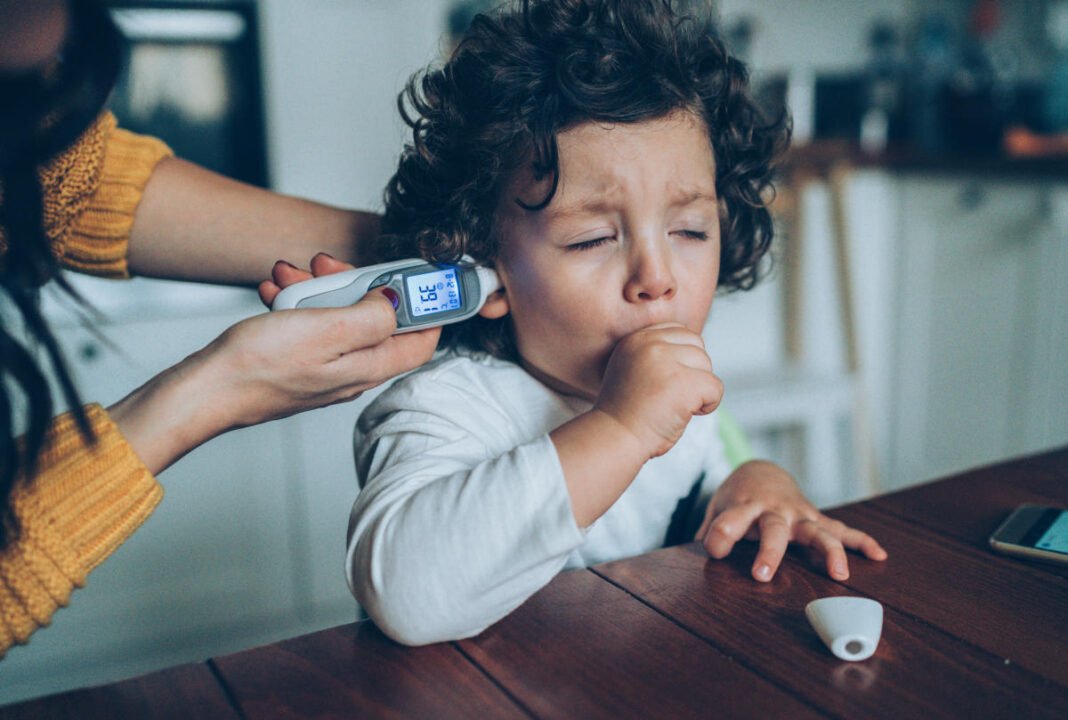The Centers for Disease Control and Prevention (CDC) recently warned that respiratory syncytial virus (RSV) and mycoplasma pneumonia, or “walking pneumonia,” are on the rise among very young children. Rates are higher than in recent years, and walking pneumonia, which is caused by bacteria, is striking babies and toddlers at unusually early ages. It could signal a season of more sniffles and fevers for parents, but experts say it’s actually what they expect to see this year and not cause for concern.
What’s going on
On Oct. 18, the CDC cautioned that rates of walking pneumonia have been rising, particularly among preschool-age children. Cases have increased among all age groups since March, CDC statistics show, and peaked in August. But the spike was particularly sharp and unusual among toddlers. The share of children between ages 2 and 4 discharged from hospitals with walking pneumonia rose from 1% as of March 31 (when mycoplasma season begins) to 7.4% by Oct. 5. Among kids ages 5 to 17, the rate increased from 3.6% to 7.4%.
RSV season, however, is just getting started. But in the Southeast, where cases typically start to rise first, the CDC says there are “signs of increased RSV activity.”
Why it’s happening
These trends are certainly noteworthy, but they’re not unexpected.
RSV infection rates peaked in mid-December in the 2018–2019 and 2019–2020 seasons. But “since COVID, we’ve seen RSV occur earlier in the year,” Dr. Larry Kociolek, associate professor of pediatric infectious diseases at Northwestern Medicine Feinberg School of Medicine, tells Yahoo Life. That’s because babies born when measures to slow the spread of COVID were in place were not getting exposed to infections like RSV. Those measures were lifted at various times of the year across the U.S., meaning that babies and young kids’ first exposures to RSV happened outside the regular season, kicking off the chain of transmission earlier than usual. “This year, the timing is more appropriate for what we would expect to see” in a typical season, he says.
A similar pattern — babies and toddlers being shielded from viruses and bacteria via COVID precautions, then suddenly exposed to them — also helps to explain why this year’s rates of walking pneumonia have been so much higher than the past two years, especially among very young children. “We are seeing higher numbers in comparison to prior seasons, but that’s mostly because in the last few years, post-pandemic, we’ve had fewer illnesses among young kids,” Dr. Preeti Sharma, a pediatric pulmonologist at Children’s Health, tells Yahoo Life.
The rise of walking pneumonia in younger children — especially those ages 2 to 4 — is partly a post-pandemic phenomenon and partly due to toddlers “being exposed to school-age siblings who are bringing those pathogens home to them,” she adds. Walking pneumonia is highly contagious, spreading through droplets from coughs and sneezes. Most people won’t develop symptoms for two to four weeks after they’re exposed, but they are contagious during this period and until their symptoms resolve. Rates of walking pneumonia also tend to surge every few years, Sharma explains. The U.S. is due for an uptick in cases, and “this is not an unusual trend,” Sharma says; It’s just affecting slightly younger kids than in past years.
What to do
The good news is that there are highly effective treatments and preventatives available for both infections. RSV typically causes mild, cold-like illness in healthy older children and adults, but it is the most common cause of hospitalization for babies in the U.S. However, a severe infection can be prevented with a vaccine during the third trimester of pregnancy. Babies who are 19 months and younger can now receive an antibody injection to protect them against RSV.
Walking pneumonia “sounds frightening because we’re talking about pneumonia,” says Sharma. “But the term ‘walking’ comes from the fact that most kids with this are up and walking around.” It, too, causes cold- or COVID-like symptoms, including a stuffy nose and a cough. It poses little severe risk to children on its own, but “unlike COVID, this is not a new pathogen; we know it’s easily treated with antibiotics,” says Sharma. She recommends seeking medical attention if your child has a cough that isn’t improving after five to seven days, so they can be tested and prescribed the medications if they have mycoplasma pneumonia.


